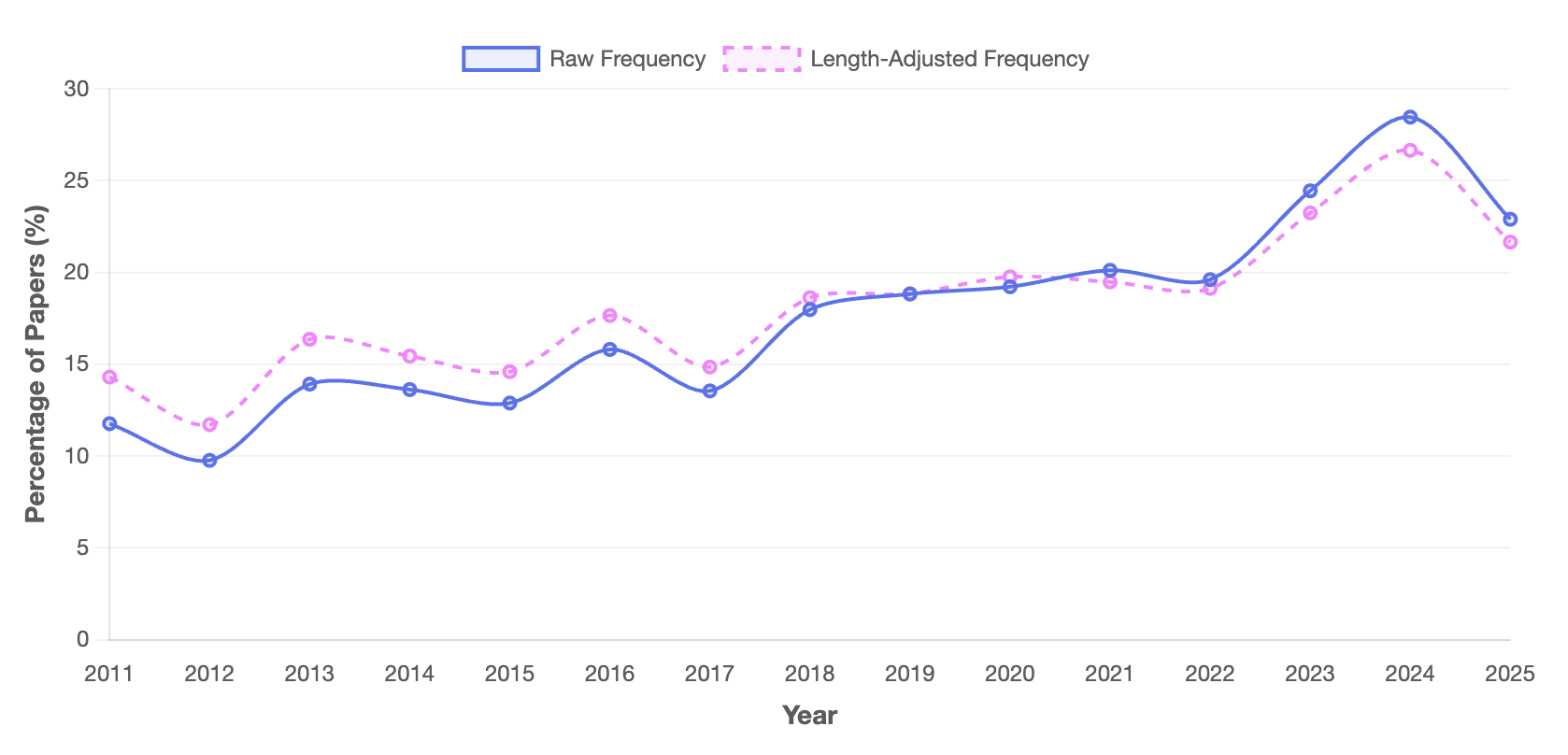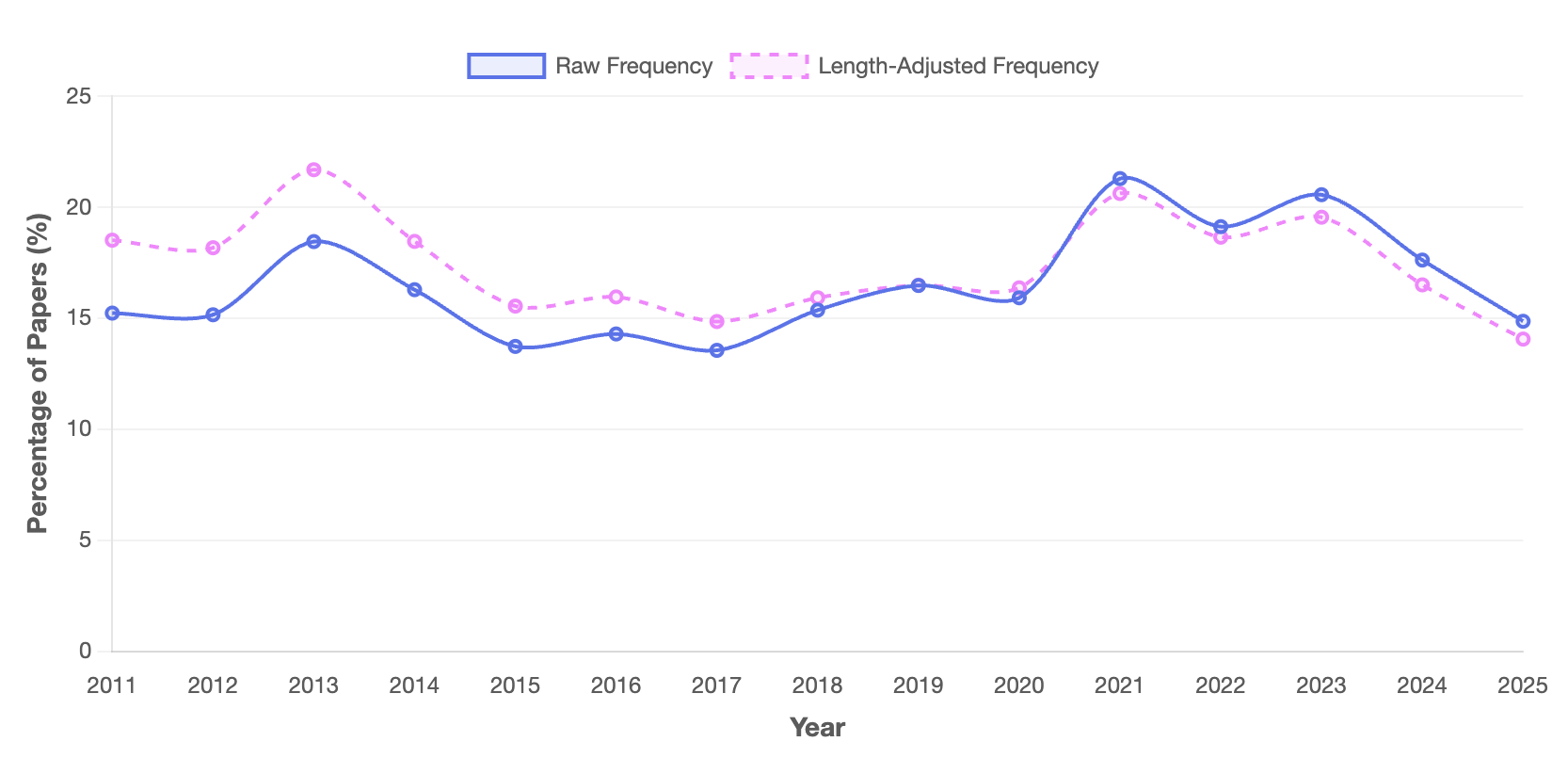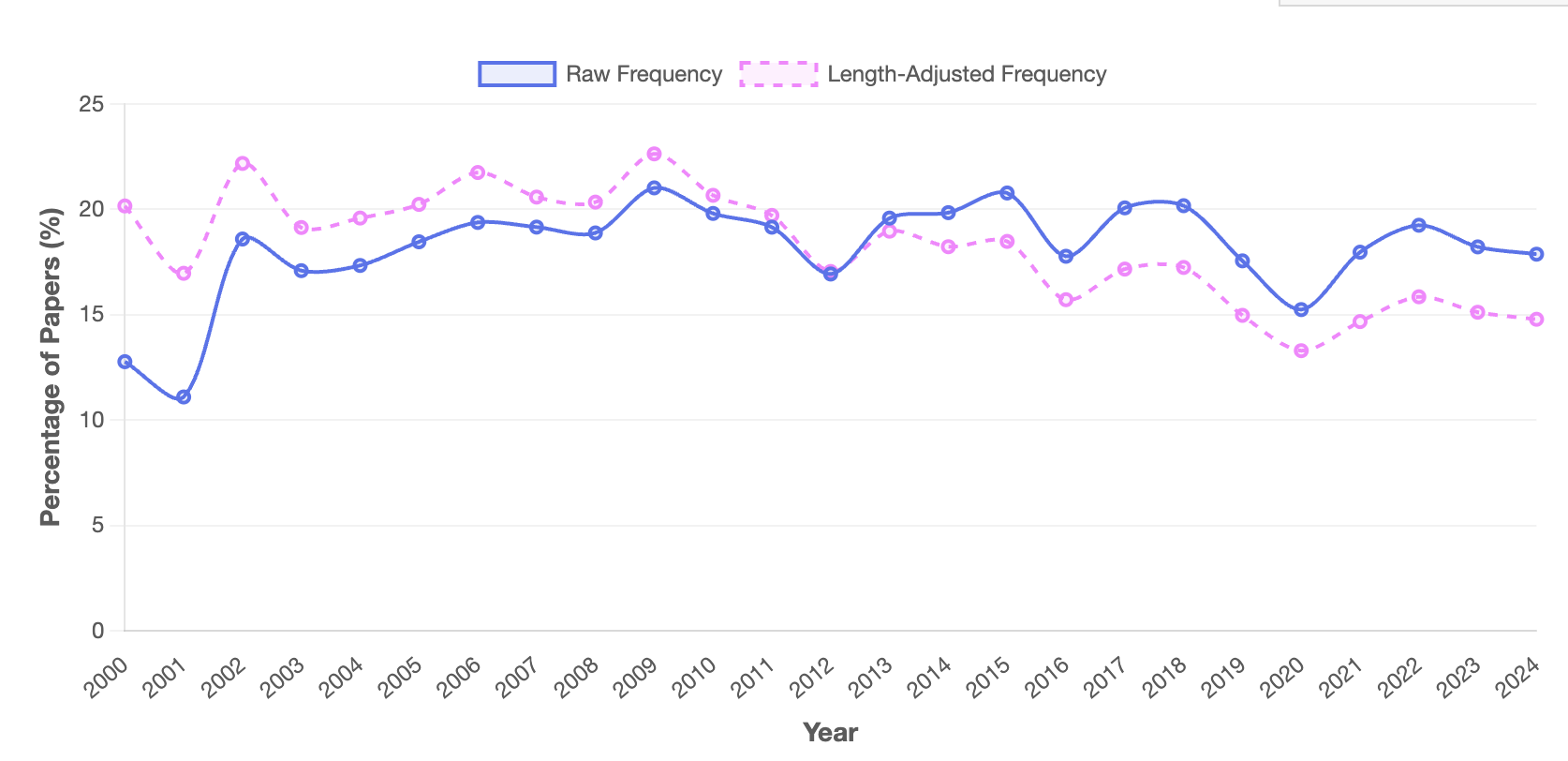Economics Literature Search Tool
I’ve been working on a side project that I think might be useful to other applied folks: a full-text search engine for econ/finance journals and NBER working papers.
The motivation is pretty straightforward. How many times have you read (or written) something like “we searched all AER papers from 2010-2020 and found X percent used difference-in-differences?” Or spent an afternoon manually checking whether anyone’s studied some specific setting you’re thinking about? Google Scholar can work great, but often you want a more targeted search (and the school library search can feel slow / clunky).
I noticed the amount of start-up costs involved while working on a project about research trends in economics, so I built a database that does the heavy lifting. It currently covers the AER, and AEJ journals back to 2010, and ~30k NBER working papers. Full-text search with filters, trend analysis over time, the works. My goal is to expand this further to other journals as I get the process worked out. [-0-] [-0-] As of this writing, I almost have the finance journals finished (JFE, RFS, JF).
A crucial one that shows up in my own work is how dominant difference-in-difference has become. Both diff-in-diff, and triple diff-in-diff, are just far more prevalent than many other causal inference methods. Here’s a quick screenshot of the interface showing diff-in-diff usage over time. Concretely, this shows the share of papers that ever mention the phrase ‘difference-in-difference’. Obviously, this could include false positives and false negatives!

Contrast this with instrumental variables:

Both of the above figures are using the AER and AEJ journals as the source. If we focus on NBER working papers, where I have a long time series, we can see how diff-in-diff has exploded in popularity over the last 20 years, relative to IV (which has fallen when you length adjust for the total length of papers):


This is just a taste of what the tool can do. You can search for any phrase, filter by journal, year, and more. The interface also provides tables of the matching papers using your search term, which can be useful for literature reviews.And if you find something interesting, let me know on Bluesky or by email — I’m curious what patterns people discover.
